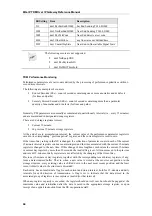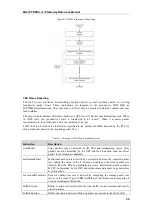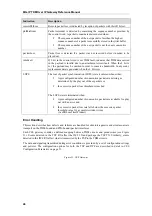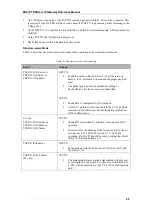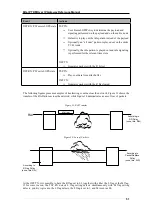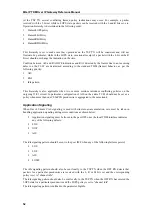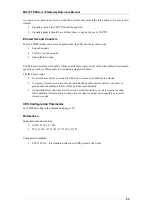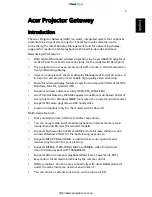
MG-IP TDM Over IP Gateway Reference Manual
40
The RDI defect is cleared when the incoming signal has the "Remote alarm indication" bit set
to binary ZERO ("0") for z consecutive double frame periods
The “Remote alarm indication” bit is the "A bit" in the 2048 kbit/s frame defined in
2.3.2/G.704.
TDM Failures
The following line failure definitions are specified in RFC3895, based on T.231, T.403 and G.775.
LOS Failure
An LOS failure is declared when an LOS defect persists for 2.5 (for T1) or 0 (for E1) +/- 0.5 seconds.
The LOS failure is cleared when the LOS defect is absent for 10 +/- 0.5 seconds (see 4.3.1.1.1/ANSI
T1.231-2003).
AIS Failure
An AIS Failure is present when an AIS defect is detected at the input for 2.5 +/- 0.5 seconds and the
AIS defect still exists. The AIS failure is cleared when there have been no LOS, AIS or OOF defects
for 10 seconds.
LOF Failure
A Loss of Frame Failure is present when an OOF defect is detected at the input for 2.5 +/- 0.5 seconds.
The LOF failure is cleared when OOF defects are absent for 10 seconds.
RAI Failure
Remote Alarm Indication is also known as a Yellow Alarm, a Far End Alarm and a Distant Alarm.
When detected, it indicates that a Red Alarm is present at the opposite link.
For T1 D4 links, the RAI failure is declared when an RDI defect is present for at least 335 ms and is
cleared when bit 6 of at least one channel is not set to zero for a period of T, where T is typically less
than one second and always less than 5 seconds. This rule is adopted for all other T1/E1 modes as
follows: the RAI failure is present when an RDI defect is detected at the input for 0.5 +/- 0.1 seconds.
The RAI failure is cleared when there have been no RDI defects for 0.5+/-0.1 seconds.
For ESF links, the Yellow Alarm failure is declared if the Yellow Alarm signal pattern occurs in at
least seven out of ten contiguous 16-bit pattern intervals and is cleared if the Yellow Alarm signal
pattern does not occur in ten contiguous 16-bit signal pattern intervals.
For E1 links, the Far End Alarm failure is declared when bit 3 of time slot zero is received set to one on
two consecutive occasions. The Far End Alarm failure is cleared when bit 3 of time slot zero is
received set to zero.
Multi-Frame Failures
For E1, multi-frame failures are detected when operating with CAS. Note that while ITU-T standards
define the faults listed below as failures only, this document follows standard defect/failure
terminology. This allows introduciton of integration/deintegration logic without changing the default
behavior of default actions (Multiframe Remote Alarm Indication, etc.). These failures are reported in
the appropriate dsx1 MIB.
Loss Of Multi-frame Failure
The Loss Of Multi-frame (LOM) defect is declared when two consecutive multi-frame alignment
signals (bits 4 through 7 of TS16 of frame 0) have been received with an error. It is cleared when the
first correct multi-frame alignment signal is received. The failure is also declared when CRC is enabled
and the framer has lost CRC alignment.



















